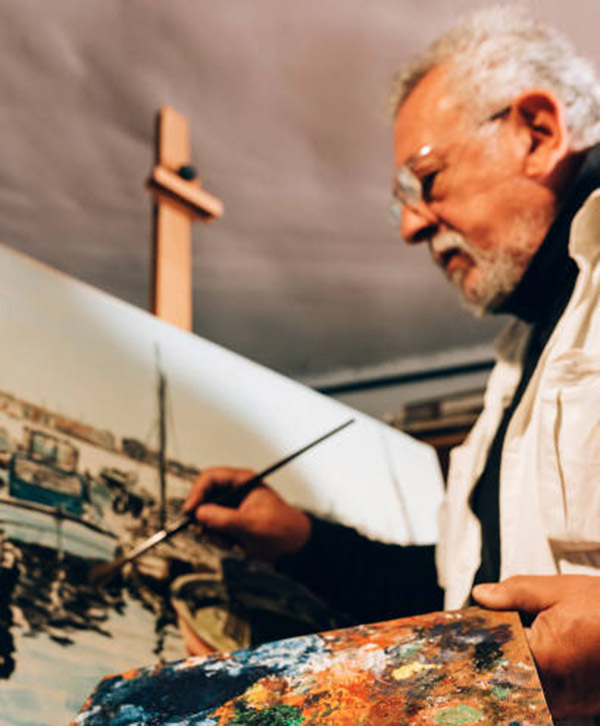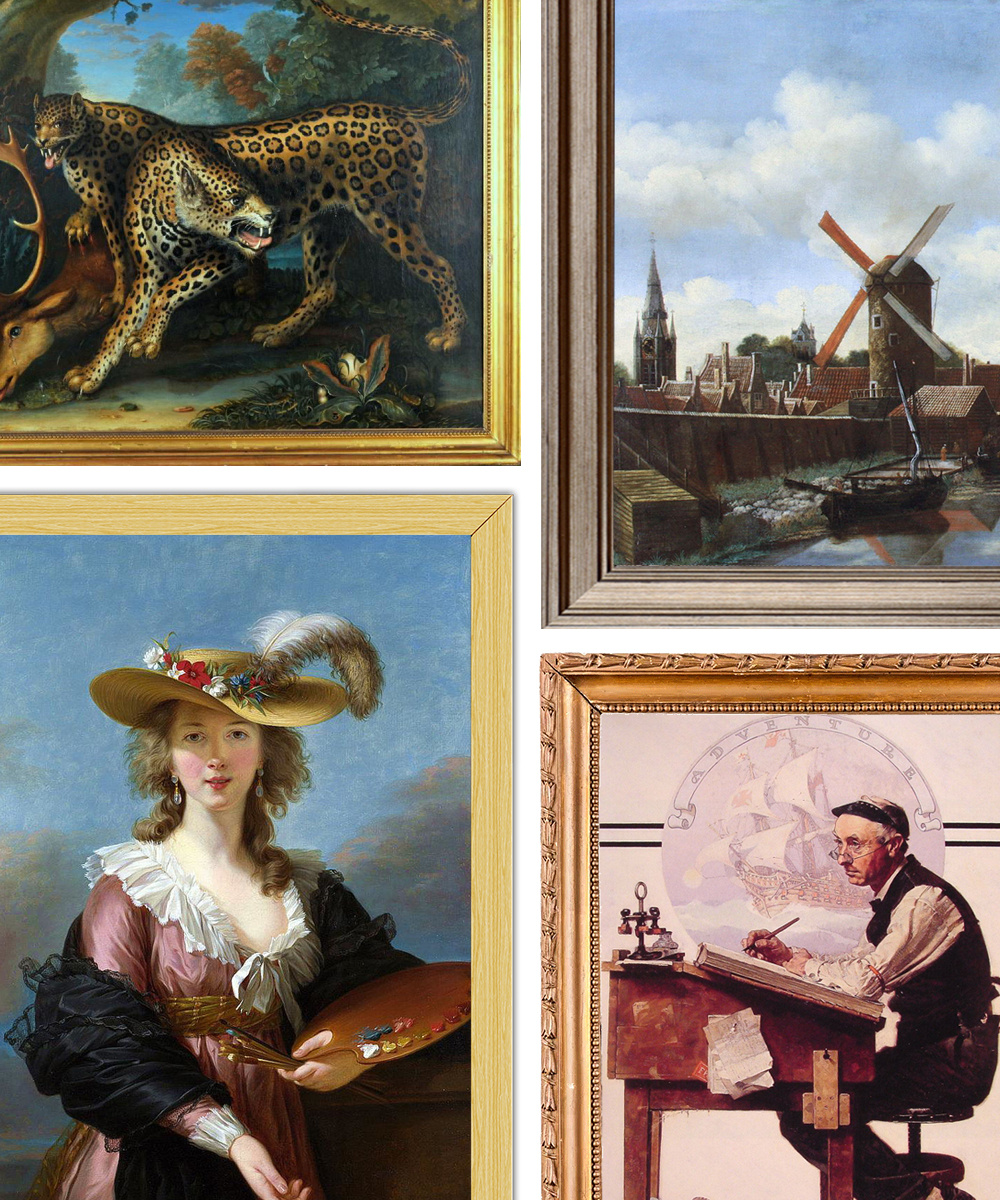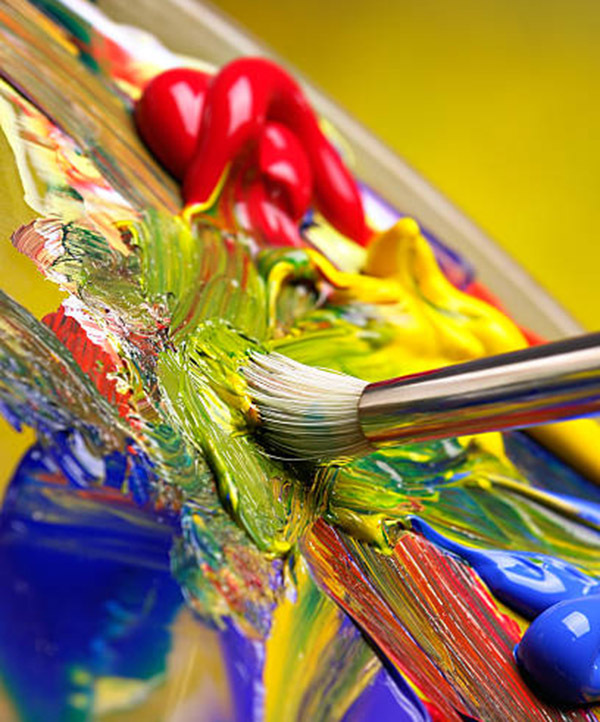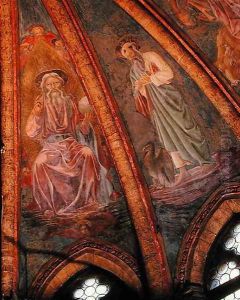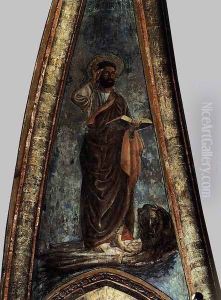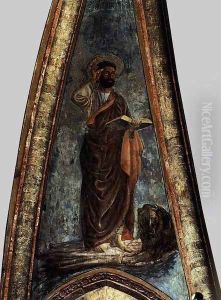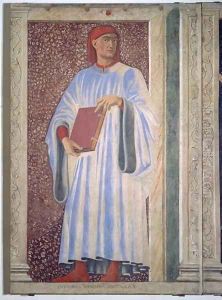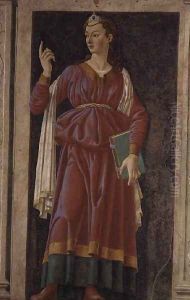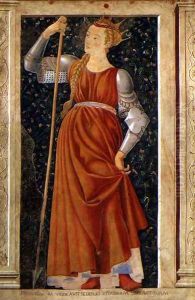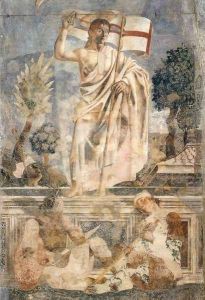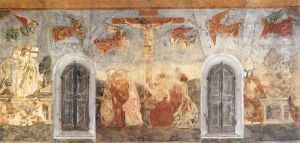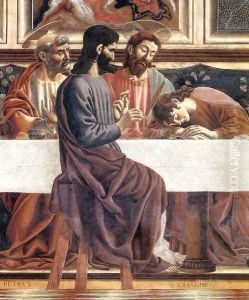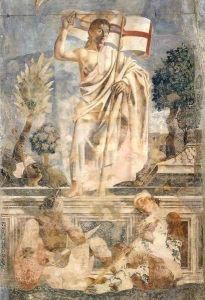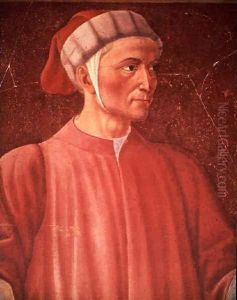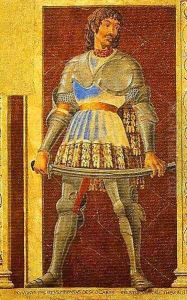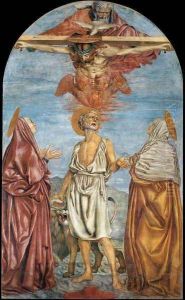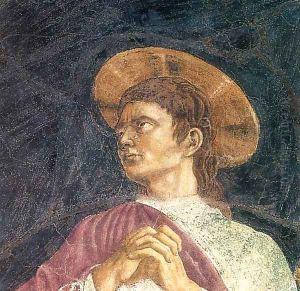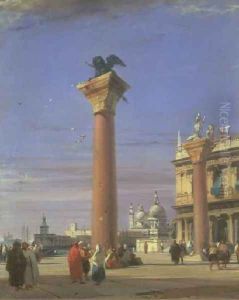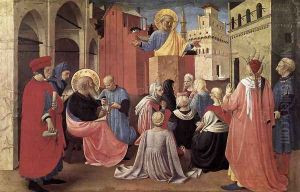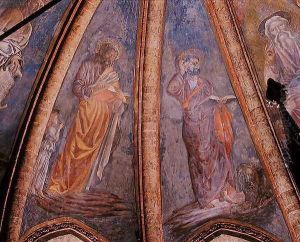





St Matthew and St Mark, from vault of the apse in the Chapel of St Tarasius, 1442
-
About Reproduction
Discover the allure of art with our faithful reproduction of "St Matthew and St Mark, from vault of the apse in the Chapel of St Tarasius, 1442", originally brought to life by the talented Andrea Del Castagno. Unlike posters or prints, our hand-painted oil painting breathes an unique sense of depth and texture into your space. Every detail, every stroke, and every texture is meticulously recreated, paying the perfect homage to Andrea Del Castagno and his artistic vision.
Owning this piece is more than just decoration - it's a statement of your refined taste in art. Let the vibrant colors and intricate details of this replica serve as a daily reminder of the beauty in our world. Elevate your decor and appreciate the richness of art with our replica of this masterpiece.
-
Painting Description
"St. Matthew and St. Mark, from the Vault of the Apse in the Chapel of St. Tarasius" is a fresco painted in 1442 by the Italian Renaissance artist Andrea del Castagno. Located in the now-lost Chapel of St. Tarasius in Florence, this artwork was part of a larger decorative scheme for the chapel, which was demolished in the 18th century. The fresco depicted the two evangelists, Matthew and Mark, as part of a series that likely included the other two evangelists, Luke and John, each represented in a quadrant of the vaulted ceiling.
Andrea del Castagno, known for his innovative use of perspective and strong, sculptural figures, would have imbued these images with a sense of depth and volume, characteristic of the early Renaissance style. His work often featured bold use of chiaroscuro and a dramatic sense of character in his figures, which would have been evident in the depictions of St. Matthew and St. Mark.
While the original frescoes have not survived, any discussion of them would rely on historical documentation or reproductions that may have been made prior to the chapel's destruction. As an artist, Andrea del Castagno was a significant figure in the Florentine Renaissance, and his works contributed to the development of fresco technique and the expressive potential of mural painting.
The loss of the Chapel of St. Tarasius and its frescoes is a reminder of the fragility of cultural heritage, and the importance of documentation and preservation efforts. Although the original work by Andrea del Castagno can no longer be appreciated in situ, its historical significance and the artist's legacy continue to be recognized and studied within the context of Renaissance art history.
-
Lead Time & Shipping
When you order this oil painting replica, it typically takes 2-3 weeks to paint. If the artwork is more complex, it might need a little more time to ensure the best quality. Once it's ready, we'll send you a photo for your approval. After you give the green light, we'll ship it to you for free.
-
Return & Refund
We believe in the quality of our hand-painted oil painting reproductions, and your satisfaction is our priority. If for any reason, you are not completely satisfied with your purchase, we offer a 45-day return policy. You can return your artwork within 45 days of receipt and receive a full refund. Please note that the artwork must be returned in the original packaging and in the same condition as it was received.

